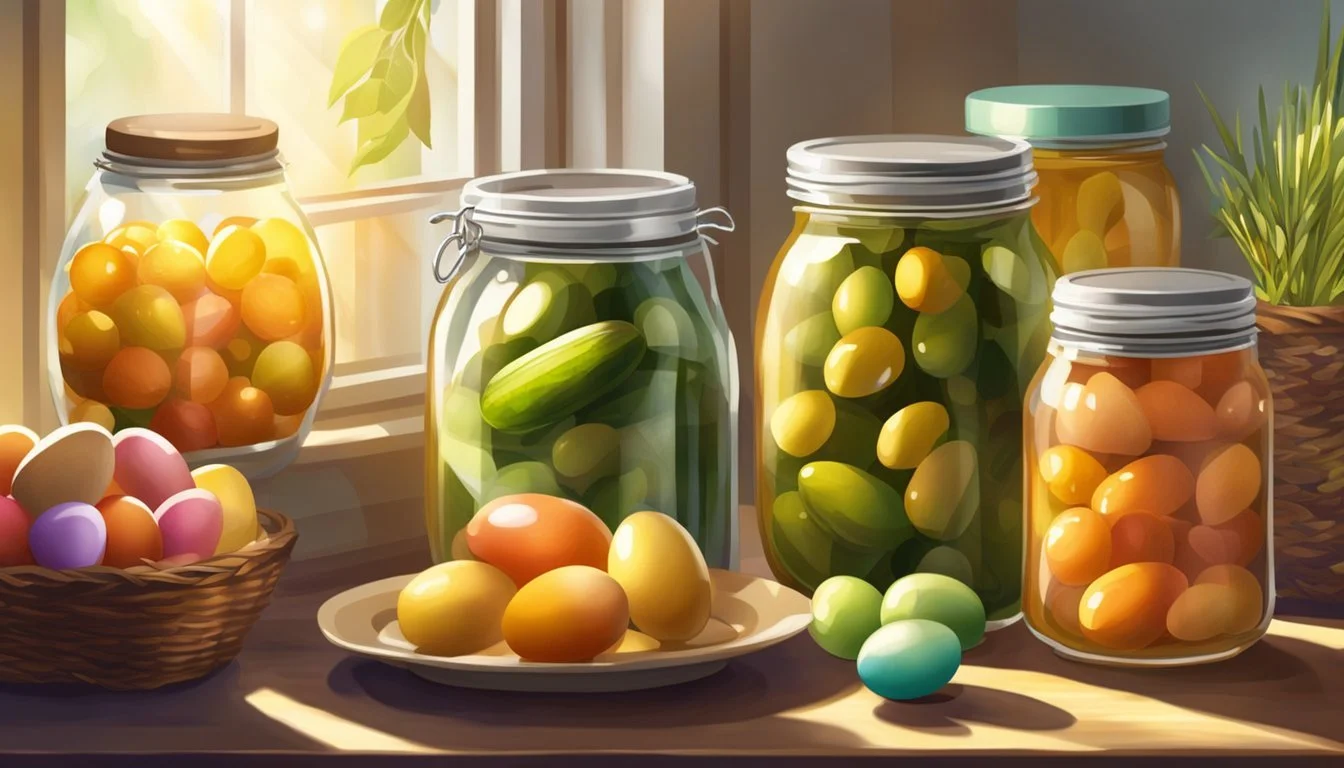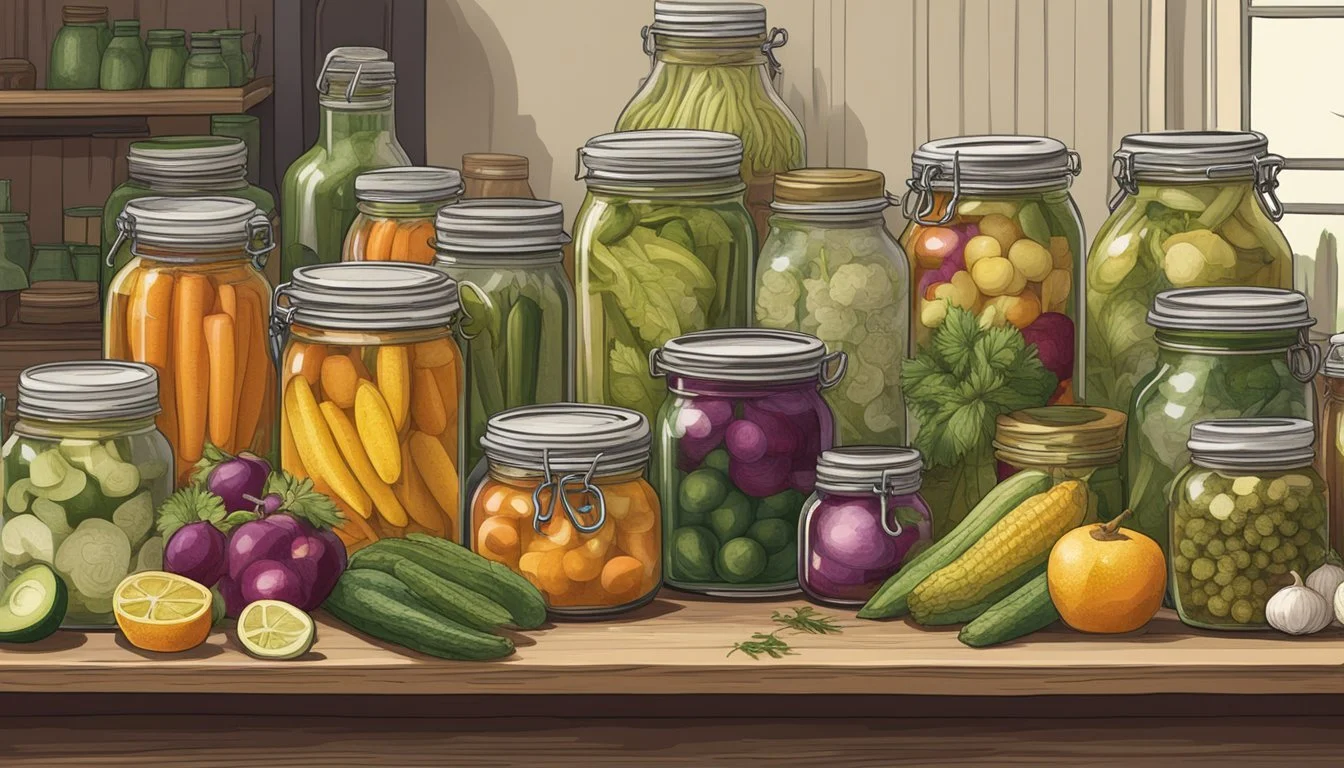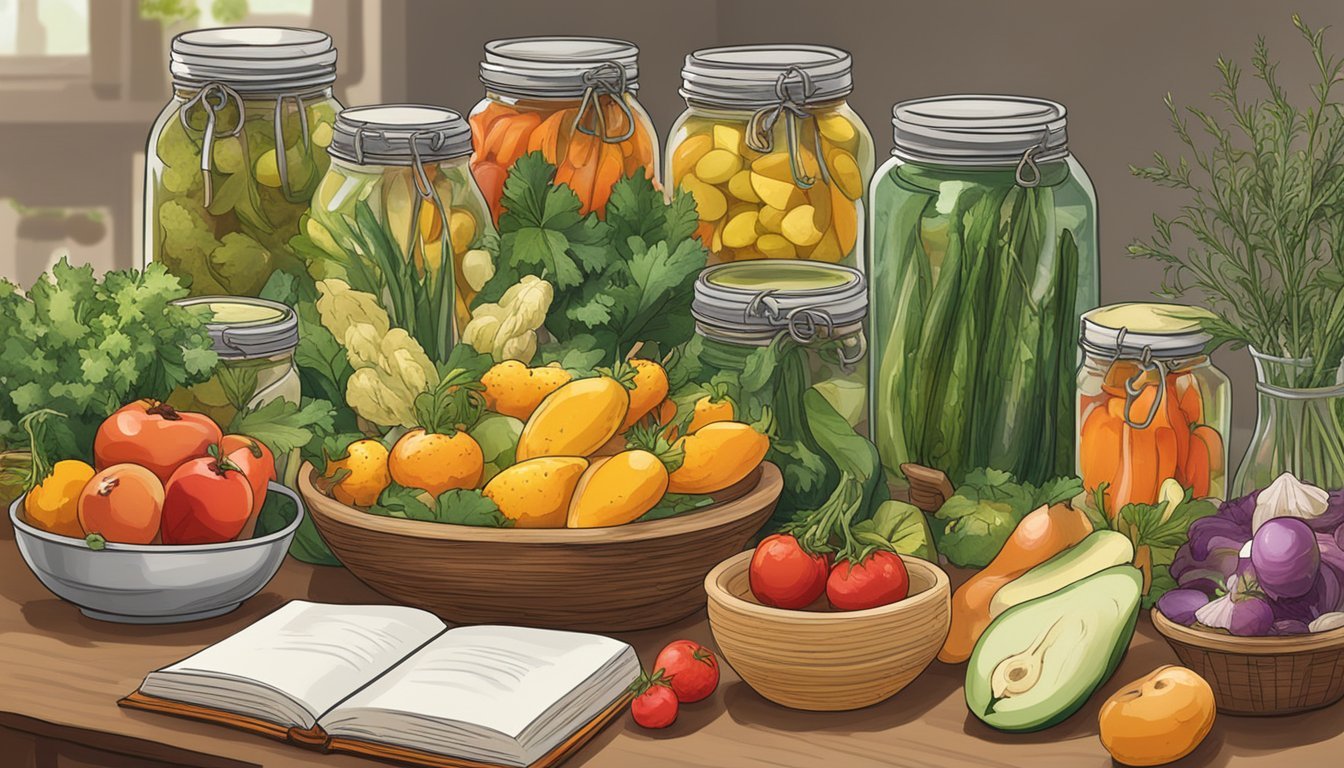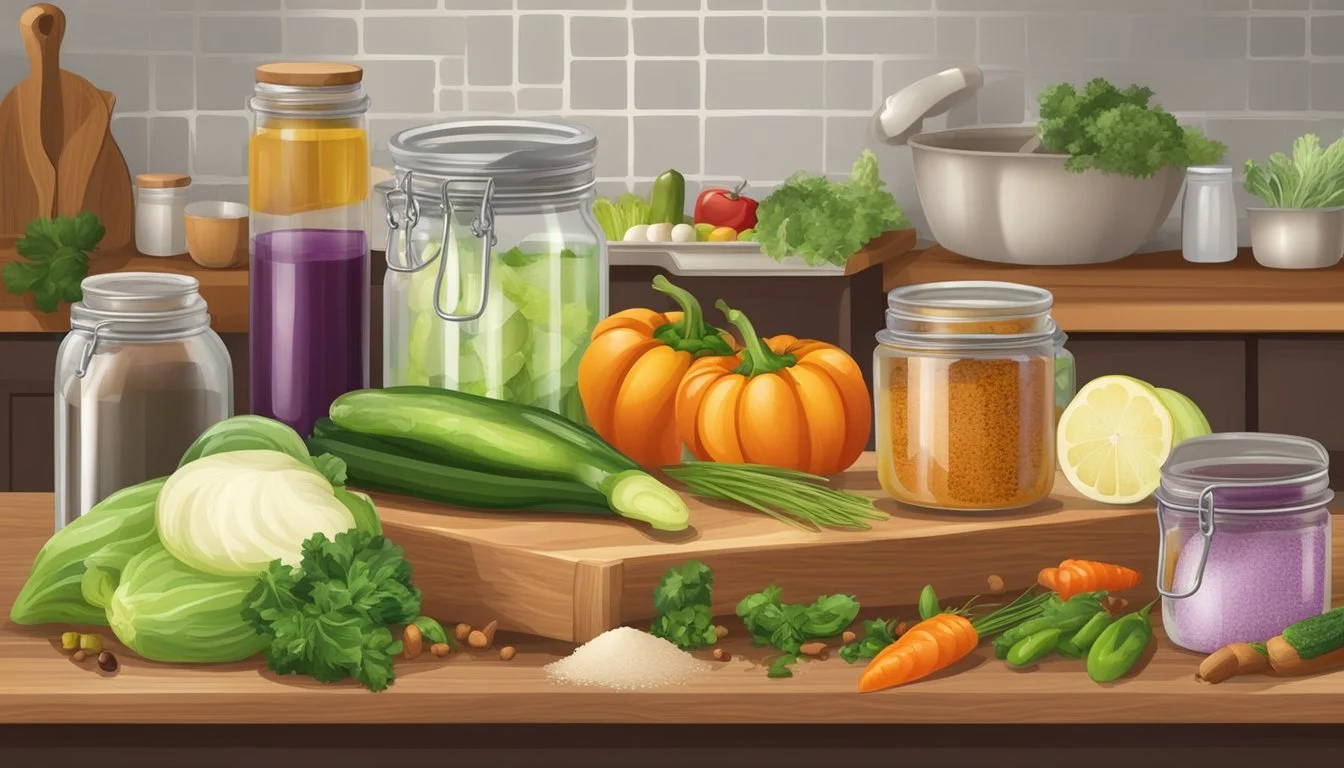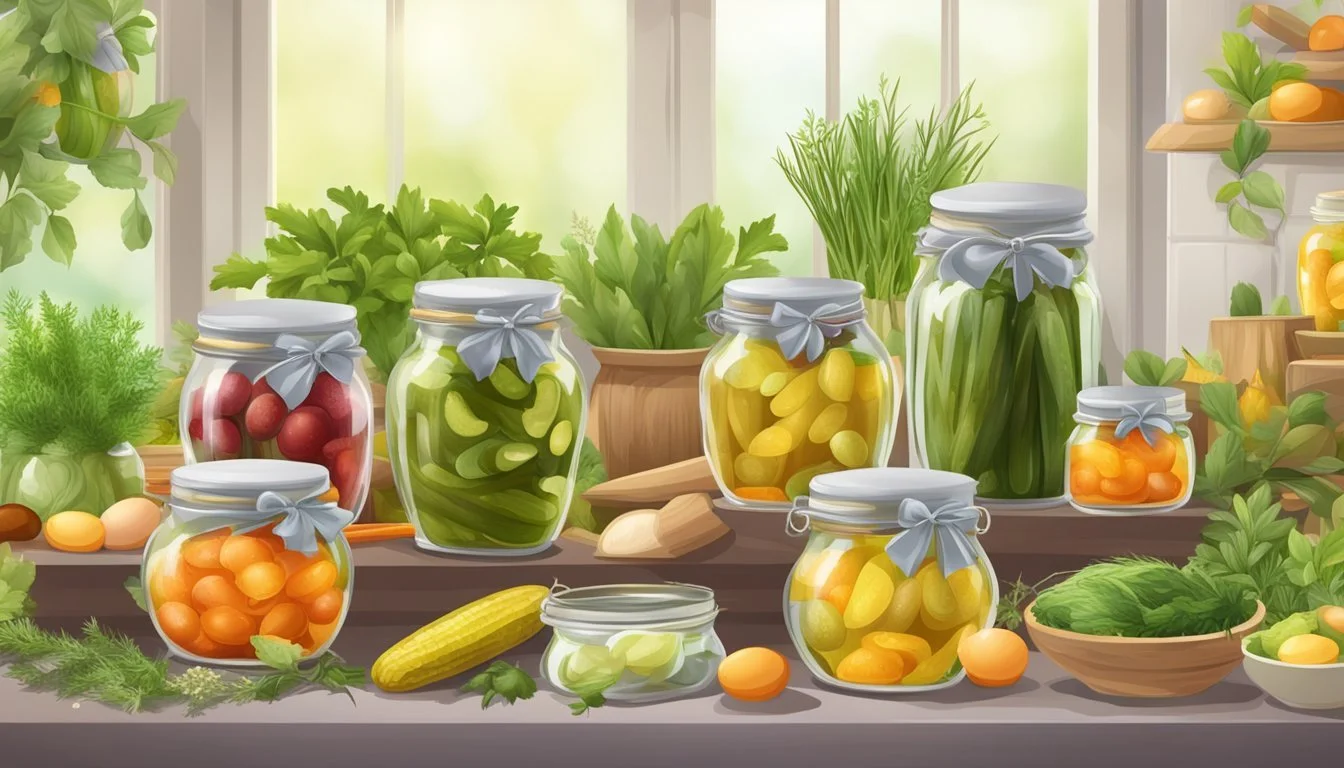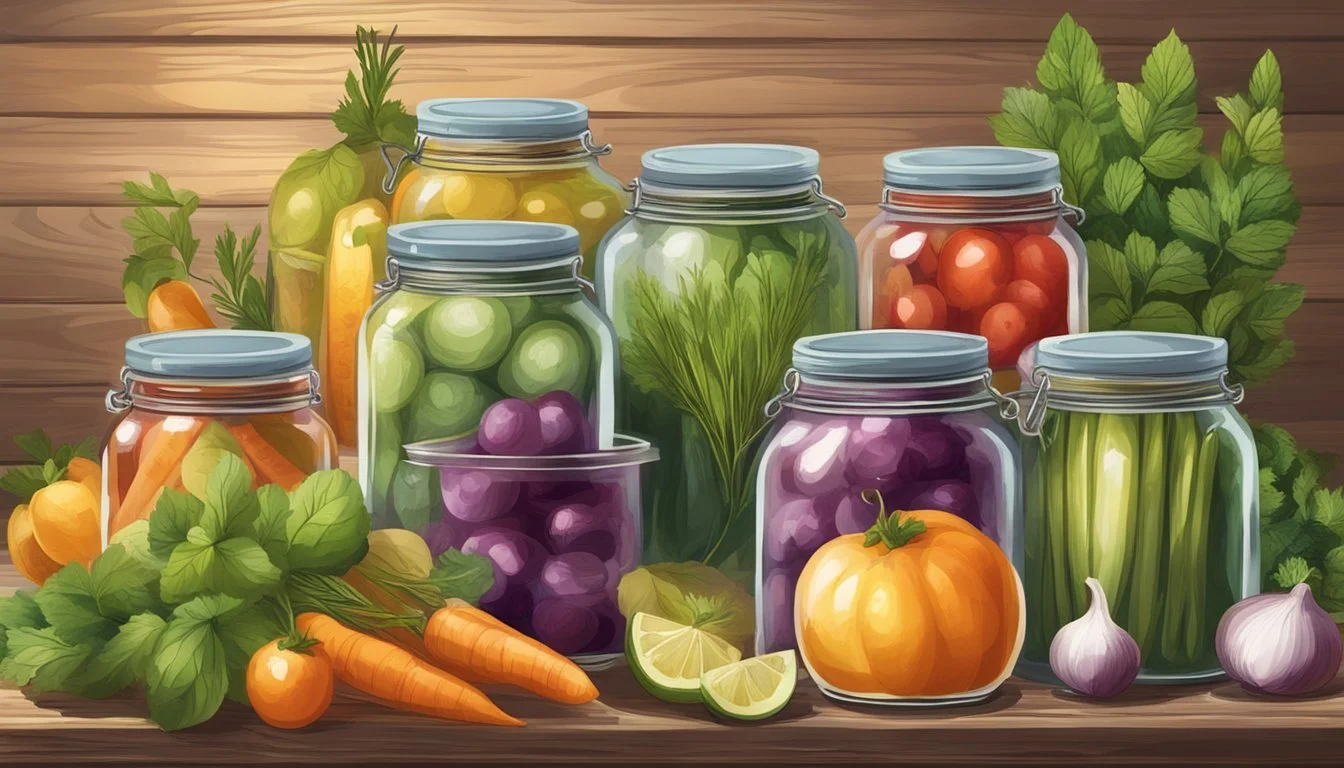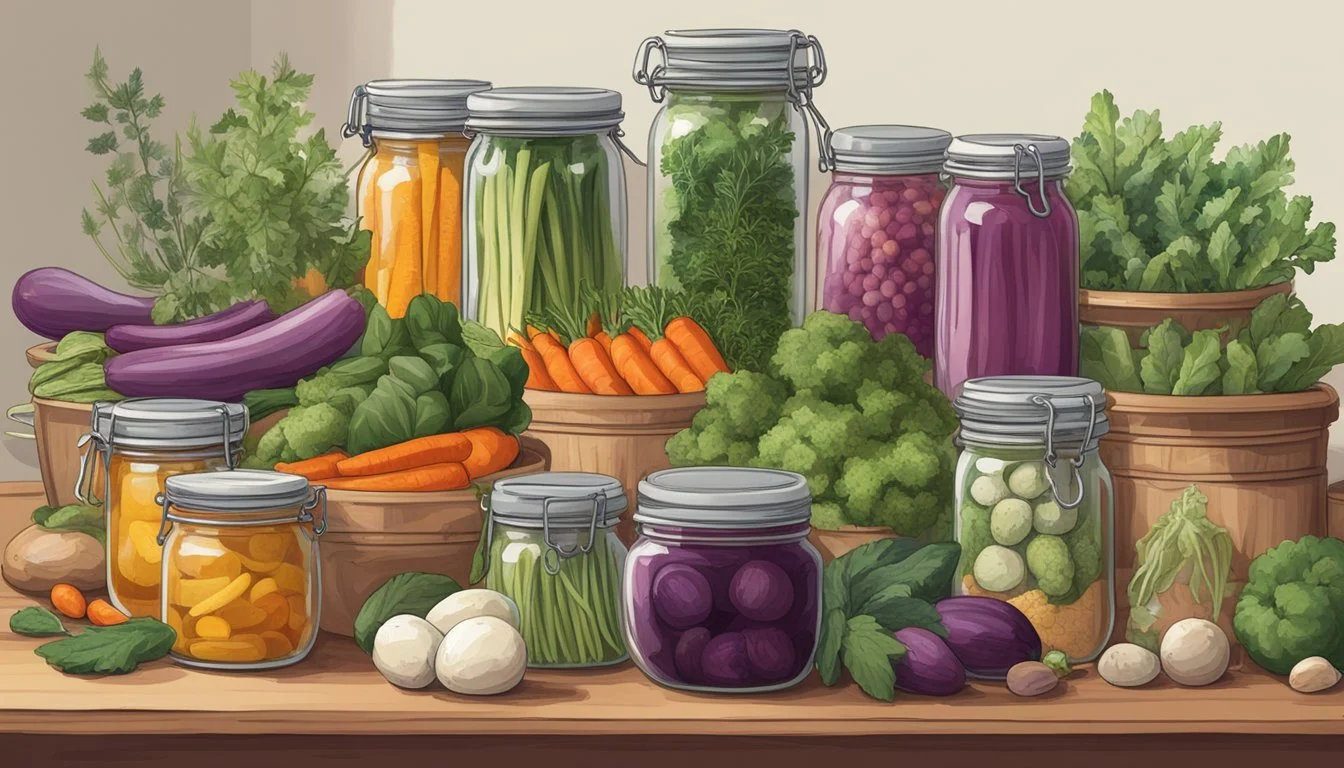The Art of Pickling and Preserving for Easter
A Guide to Flavorful Holidays
In the spirit of tradition and culinary craft, Easter presents a perfect opportunity to explore the art of pickling and preserving. These methods not only extend the shelf life of seasonal produce but also infuse them with unique flavors that complement the festive fare. Pickling, the process of immersing foods in a solution of vinegar or brine, has been a cornerstone of many cultures' food preservation practices for centuries. By introducing an acidic environment, pickling prevents the growth of bacteria, ensuring that vegetables, fruits (What wine goes well with fruits?), and even proteins can be savored well beyond their natural expiration dates.
Preserving foods operates on a similar ethos of longevity and taste. Techniques vary from simple refrigeration to more involved processes like canning, which seals food in airtight containers, often after being heated to destroy bacteria and inactivate enzymes. Whether using sugar and vinegar to create sweet and sour notes or brine for a salty tang, preserved foods acquire an enhanced taste profile that broadens the culinary landscape. This Easter, the timeless tradition of preserving takes its place at the table, offering a diverse palette of flavors that honor both the freshness of spring produce and the rich history of gastronomy.
Embracing these practices in the modern kitchen requires a blend of simple ingredients and methodical technique. White wine vinegar, water, and pickling salt become the foundation of a basic pickling brine, while sterilization ensures that jars are ready to seal in the flavors and freshness of the ingredients. The result is an array of delightful preserves that add both depth and character to the Easter meal, not to mention the added pleasure of having crafted them by hand.
Historical Development of Pickling
Pickling, a process utilizing vinegar, salt, or a brine solution, stands as a testament to human ingenuity in food preservation. The origins trace back to 2400 B.C. in the Tigris Valley, attributed to the Sumerians, who discovered that such preservation methods not only extended the shelf life of food but also enhanced its flavor.
By the time of Cleopatra, pickling was a commonplace practice. The queen of Egypt attributed her renowned beauty to a diet containing pickled foods. Moreover, the preservation technique had spread across the globe; even cucumbers (how long do cucumbers last?), native to India, were being pickled. These cucumbers journeyed from their home country through the Middle East to Europe, where they became a staple in many diets.
The Dutch played a significant role in advancing the craft of pickling. They created the term pekel, referencing the brine used in the pickling process, and were known for their expertise in pickling herring.
Component Role in Pickling Vinegar Acidifies the brine, inhibits microbial growth Salt Draws moisture out of foods, creates a hostile environment for bacteria Cucumber Commonly pickled item, known for its crispness after pickling
The art of pickling has indeed come a long way from its ancient roots to becoming a culinary practice celebrated worldwide, including its presence in Easter feasts where pickled foods often accompany traditional dishes.
Basic Principles of Pickling and Preserving
The process of pickling transforms raw ingredients into preserved foods through an acidification practice that enhances flavor and extends shelf life. The foundational components of pickling include vinegar, salt, water, and a variety of spices.
Acidity is a pivotal element, often introduced through vinegar or through lactic acid forming during fermentation. The pH must be sufficiently low to prevent the growth of harmful bacteria. Brine, a mixture of water and salt, is the basic pickling medium to which vinegar is frequently added for its acidic properties.
Salt: A key preservative that draws out moisture, salt plays a dual role in both texture enhancement and the control of microbial growth.
Water: Used in brine, largely as a vehicle for salt and spices to permeate the food item.
Vinegar: Acetic acid in vinegar provides the requisite acidity, ensuring foods are preserved safely.
Spices: A range of spices can be added to impart unique flavors to pickled products.
It's important use a proportionate blend of these ingredients to balance taste with preservative efficacy. The pickling process can include either quick brine soak-and-rinse methods or the traditional fermentation process, where natural bacteria on the food create the preservative environment.
Proper technique and careful monitoring of acidity levels are crucial to ensure that pickled foods are not only flavorful but also safe to consume.
Essential Ingredients and Equipment
Pickling and preserving are enriching ways to enhance and extend the life of seasonal produce. The success of these practices hinges on using top-quality ingredients and reliable equipment.
Selecting the Best Produce
For optimal results, one should choose fresh, in-season vegetables and fruits that are free of blemishes and spoilage. Cucumbers and carrots are classic choices for pickling; however, nearly any vegetable or fruit can be preserved. Peak harvest times yield the best flavor and texture.
Understanding Acids and Salts
Acids, predominantly vinegar, create the necessary acidic environment for pickling. One may choose from a variety, such as white vinegar or apple cider vinegar, but it must have at least 5% acidity. Pickling salt is preferred over table salt due to its purity and lack of anti-caking agents, which can cloud the brine.
Spices and Herbs for Flavoring
A myriad of spices and herbs can be used to create distinct flavors. Common selections include:
Garlic: Adds pungency
Dill: Offers a fresh, slightly anise-like taste
Mustard seeds: Provide a subtle heat
Cinnamon and cloves: Introduce a warm, spiced note
Experimenting with various combinations tailors the taste to one's preference.
Tools of the Trade
Essential tools for the pickling process include:
Jars: Glass with airtight lids to store pickles
Saucepans: Used to heat brine
Jar lifters: Safeguard hands during sterilization
These items ensure precision and safety during the preservation process.
Safety and Sterilization
One must always use sterilized jars to prevent contamination. This involves boiling jars and lids or using an oven to eliminate any bacteria that may spoil the preserved goods.
Fermentation Fundamentals
In the case of fermentation, such as sauerkraut, an anaerobic environment is necessary for lactic acid bacteria to thrive. This process requires specific crocks or jars designed for fermentation, which enable anaerobic fermentation while preventing unwanted bacteria growth, resulting in a richly flavored, acidic product.
Pickling Techniques
Successful pickling results in flavorful preserves perfect for enhancing any Easter meal. Each technique involves distinct processes and ingredient combinations to achieve the desired flavor and texture.
Quick Pickling
Quick pickling is a fast and accessible method, ideal for those looking to prepare pickles within a short timeframe. It typically involves simmering a mixture of vinegar, sugar, and spices to create a brine, then covering the vegetables or fruits with this hot liquid. The pickled items are usually ready to eat within a few hours, infused with a tangy flavor profile.
Fermented Pickles
Fermented pickles rely on natural bacteria to sour and preserve the produce. In this technique, vegetables are submerged in a saltwater brine, creating an anaerobic environment conducive to fermentation. Over days or weeks, the fermenting process develops complex sour flavors, as seen in foods like kimchi and sauerkraut.
Refrigerator Pickles
Refrigerator pickles offer convenience and simplicity. Vegetables are soaked in a vinegar solution with sugar and spices, then stored in jars in the refrigerator. The cold environment slows down fermentation, allowing flavors to meld while keeping the pickles crisp. Unlike canned pickles, these are not shelf-stable and must be consumed within a shorter time frame.
Traditional Crock Pickling
Traditional crock pickling is a time-honored method that encompasses both fermenting and vinegar-based techniques. Large earthenware crocks are used to create an ideal environment for preserving larger batches. Whether using a vinegar solution or a saltwater brine, this method often takes longer but can develop more pronounced and mature flavors.
Sweet Pickling
Sweet pickling transforms fruits and vegetables with a delightful balance of sugar and vinegar, combined with whole spices like cinnamon or cloves. The result is pickles with a sweet flavor profile that pairs well with savory dishes. Granulated sugar is commonly used in the brine to achieve a distinct sweetness, creating pickles that are perfect for those with a sweet tooth.
Relishes, Chutneys, and Jams
Beyond traditional pickles, relishes, chutneys, and jams are other forms of preserving that often incorporate pickling techniques. They combine fruits or vegetables with sugar, vinegar, and a variety of spices, cooked down to a desired consistency. These preserves offer a complex mix of sweet, tart, and spicy flavors that can enhance meats, cheeses, and bread.
Recipes for Easter
Easter celebrations often include an array of savory and sweet pickled vegetables, (What wine goes well with pickled vegetables?) showcasing the time-honored tradition of pickling. These recipes provide a balance of flavor, from classic dill pickles to sweetly spiced variants, enhancing the holiday table.
Easter Brine for Vegetables
A basic brine for vegetables such as carrots, cauliflower, green beans, and radishes includes water, vinegar, salt, and sugar. To this, one can add dill, mustard seeds, and garlic for a classic dill pickle flavor.
Ingredients:
2 cups water
2 cups vinegar (apple cider or white)
2 tablespoons pickling salt
1 tablespoon sugar
Additional herbs and spices (dill, mustard seeds, garlic)
Sweet Pickles for the Holiday Table
Sweet pickles, often enjoyed by those with a lighter palate, can be made by adding more sugar to the brine and incorporating spices such as cinnamon and allspice. They pair well with cucumbers and are a delightful contrast to savory dishes.
Ingredients:
2 cups thinly sliced cucumbers
1 cup white vinegar
3/4 cup sugar
1/2 teaspoon salt
2 sticks cinnamon
1 tablespoon allspice
Savory Herbal Recipes
Savory herbal pickles are a blend of earthy herbs and crisp vegetables. For a compelling twist, add fresh parsley or dill after sautéing vegetables like radishes and green beans to retain their vibrant color and crunchy texture.
Ingredients:
Assorted vegetables (radishes, green beans)
Olive oil for sautéing
Lemon juice
Fresh parsley or dill
Spicy Creations
For those who favor a kick, infusing the pickling liquid with spicy elements like peppers or concocting a spicy kimchi can add a zesty dimension to the Easter feast. The presence of beneficial bacteria in kimchi also offers a healthy addition to the menu.
Ingredients:
1 Napa cabbage, chopped
4 tablespoons Korean red pepper flakes (gochugaru)
1 tablespoon grated ginger
4 cloves garlic, minced
1 teaspoon sugar
2 tablespoons fish sauce or soy sauce (for a vegetarian option)
Pickling Fruits and Unconventional Items
Pickling is not confined to the usual cucumbers and carrots; it extends to a diverse array of fruits and unconventional items, enriching the Easter table with a symphony of sweet and savory preserves.
Pickling Beyond Vegetables
Typically, when one thinks of pickling, vegetables such as cucumbers and beets come to mind. However, the preservation process also wonderfully embraces fruits like pears and apples, transforming their flavors. These fruits absorb the pickling liquids, combining the natural sweetness with acidic or savory brine, creating a unique taste profile.
Exploring Unique Flavors
The infusion of spices such as cinnamon, cloves, and star anise introduces complex and intriguing flavors to pickled fruits and unconventional pickles. For example, pear slices pickled with cinnamon can become a staple at Easter feasts, offering a warm, spiced alternative to traditional pickles.
Easter-Themed Pickles
For an Easter celebration, consider adding vibrantly colored pickled eggs to the table. Using beetroot in the pickling solution not only preserves the eggs but also imparts a festive pink hue, ramping up the visual appeal and adding a tangy flavor that pairs well with the season's traditional dishes.
Sweet Fruit Preserves
Pickling fruits often leads to the creation of sweet preserves. The balance of vinegar, sugar, and the fruit's natural flavors results in a delectable preserve that complements both savory and sweet dishes. Apples and pears are common choices for these preserves, soaked in a syrup made from equal parts sugar and vinegar for a perfect Easter condiment.
Regional Specialty Pickles
Around the world, various cuisines incorporate fruits and unconventional items into their pickling. Korean kimchi and German sauerkraut may be the forerunners, but many regions have their own specialty pickles. A tangy dill and sugar based brine, for instance, is used to pickle fruits in Eastern Europe, resulting in a flavourful addition to the regional palate.
Health Aspects of Pickles and Preserves
Pickling, a method of preserving foods, has beneficial health aspects when consumed in moderation. Traditionally, this practice involves submerging fruits and vegetables in an acidic medium like vinegar or brine. The resulting product is not only preserved but also imbued with a unique flavor.
Probiotics: Certain pickles prepared using fermentation can be a source of probiotics. These are beneficial bacteria that contribute to gut health. When pickles are made by allowing natural fermentation to occur without the use of vinegar, they can support the growth of these microorganisms.
Nutrients: Despite the preservation process, pickled foods retain most of their nutrients, providing a good source of vitamins such as Vitamin A and K. However, the initial nutritional content can be altered, so fresh fruits and vegetables should still be a diet staple.
Antioxidants: Pickles and preserves also contain antioxidants. These compounds help protect the body's cells from damage due to oxidation, which contributes to the aging process and various diseases.
Sodium Content: It's important to note that pickles can be high in sodium, which may not be suitable for individuals with certain health conditions.
Sugar Content: Preserves, which are fruits stored in a sugar-based syrup, can also be high in sugar.
When included in the diet, pickles and preserves should be considered alongside these factors. They can offer taste, variety, and potential health benefits, such as improved digestion and supply of antioxidants, but balance and moderation are key aspects of consumption.
Storing and Serving Suggestions
In this section, readers will learn how to safely store pickled delights for longevity and discover creative ways to present and pair them for the Easter celebrations.
Proper Canning and Storage
Shelf Life: Properly canned pickles can have a shelf life of up to 1-2 years when stored in a cool, dark place. The key to extending shelf life lies in proper sterilization and sealing. Sterilized Jars should be used for canning, ensuring that they are heated thoroughly before filling with pickles to prevent contamination.
Heat the canning jars in boiling water to sterilize them.
Fill jars with hot pickled vegetables, leaving appropriate headspace.
Apply lids and rings before processing in a boiling water bath for the time specified in the recipe.
Once cooled, check that jars are properly sealed before storage.
Pairings and Serving Ideas
Flavor Tie-Ins: For Easter, pair the zesty flavor of dill pickle with creamy deviled eggs, or serve cucumber pickles as a crisp counterpoint to rich lamb dishes.
Serving Suggestions:
Add pickled vegetables to a vibrant Easter salad for a burst of acidity.
Offer a platter with a variety of pickles alongside cheeses and cured meats.
Use the pickling sauce or oil as a dressing for side dishes.
Easter Presentation Tips
Table Setting: When presenting pickled vegetables at Easter, consider both aesthetics and functionality. Place them in a way that complements the colors and textures of the Easter table.
Display Ideas:
Arrange the pickles in a separate dish or integrate them into the main serving platter for contrast.
If using clear jars, label them with a tag or ribbon for a festive touch.
Incorporate Easter-themed decorations or foliage to echo the springtime theme.
Staying Mindful of Dietary Restrictions
When engaging in the art of pickling and preserving, particularly for occasions like Easter, it's important to keep in mind that individuals may have specific dietary restrictions due to health reasons or lifestyle choices. For individuals watching their salt intake, the high sodium content in traditional brine can be a concern. Creators of pickled products can opt to reduce the salt quantity, but should understand that salt is a key preservative agent.
For those monitoring sugar consumption, pickling often includes sugar to balance out the acidity of the vinegar. To accommodate these individuals, one may consider using sugar substitutes or natural sweeteners in smaller amounts. However, it's essential to note that this can alter the final flavor profile of the preserve.
Speaking of acid, the acidic nature of vinegar helps prevent the growth of harmful bacteria in pickled foods, making it an indispensable component. People with acid sensitivity may require milder forms of vinegar or alternative acid sources. Experimentation with various types of vinegar, like apple cider or balsamic, could offer tolerable and appetizing options.
Here's a quick reference table to aid in ensuring your pickled delights can be enjoyed by all:
Concern Consideration Suggestion High Salt Reduce or find alternatives Use salt substitutes or low-sodium salt Sugar Intake Reduce or substitute Employ sweeteners like stevia or honey Acidic Foods Adjust type or amount of vinegar used Try different vinegars or dilute with water
A clear understanding of your audience’s dietary needs ensures that the beauty of preserved foods can be inclusively savored during Easter celebrations. Always clearly label your pickled items so recipients can make informed choices that align with their dietary limitations.

